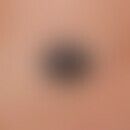HistoryThis section has been translated automatically.
Hemoglobin is one of the first proteins to be studied by X-ray crystallography, for which Max Perutz was awarded the Nobel Prize in 1962 (Ahmed 2020).
DefinitionThis section has been translated automatically.
The term "hemoglobin" refers to an iron-containing, oxygen-binding protein of erythrocytes that has peroxidase properties (Gressner 2019).
You might also be interested in
ClassificationThis section has been translated automatically.
Hemoglobin occurs as:
- Hemoglobin A0
This is the most abundant hemoglobin in adults at 97.5%. It consists of 2 alpha and 2 beta chains (Kietzmann 2023).
- Free hemoglobin (hemoglobin in plasma)
Free hemoglobin is the hemoglobin that is freely present in plasma. This is produced in small amounts in the RES during the breakdown of erythrocytes. It is bound to haptoglobin and returned to the RES (Gressner 2019).
- Glycated hemoglobin (glycated hemoglobin).
Glycated hemoglobin is hemoglobin bound with various carbohydrates, most commonly found bound with glucose (Gressner 2019).
- Hemoglobin in urine (hemoglobin in urine).
Micro- or macroscopically detectable hemoglobin in urine. This may be due to prerenal causes such as hemolysis, poisoning, severe infectious diseases, etc., renal causes such as various diseases of the kidney, and postrenal causes such as bleeding in the urinary tract (Gressner 2019).
- Hemoglobin A1
Hemoglobin A1 is a mixture of HbA glycated with different carbohydrates (Gressner 2019).
- Hemoglobin A1c
When blood glucose levels are elevated, some hemoglobin is covalently glycosylated to hemoglobin A1c by the presence of glucose in plasma (Silverthro2009).
The hemoglobin A1c- value reflects the average blood glucose level of the last 3 months and therefore plays a major role in the long-term control of diabetes mellitus. A value of ≤ 5.7% is considered normal, and a value of > 6.5% is considered diabetic (Fung 2022).
- Hemoglobin A2
This is also composed of 2 alpha and 2 delta chains and is rarely found in adults at 2.5% (Kietzmann 2023).
Hemoglobin F (HbF)
This is found in 100% of fetuses and 75% of newborns. It consists of 2 alpha and 2 gamma chains and has a higher oxygen affinity than HbA0. HbF is exchanged for HbA 0 during the first 3 months of life (Kietzmann 2023).
In the meantime, more than 1,000 naturally occurring variants of hemoglobin have been discovered, some of which could be assigned to disease patterns. However, the majority of these variants could not yet be assigned to a disease state (Ahmed 2020).
General informationThis section has been translated automatically.
Different hemoglobins are formed during embryonic, fetal and adult life (Kasper 2015).
Erythrocytes consist of 34 % hemoglobin. Hemoglobin thus represents the most important hemoprotein in the blood (Kietzmann 2023).
Hemoglobin is synthesized exclusively in erythrocytic progenitor cells, and its degradation occurs in cells of the reticuloendothelial system (RES), particularly in the spleen (Gressner 2019). During this process, the heme groups are converted to bilirubin, which is secreted through the intestine as a component of bile and is largely excreted as faeces (Silverthorn 2009).
The reference range of hemoglobin is for:
- Women 123 - 153 g / l
- Men 140 - 175 g / l (Gressner 2019).
When hemoglobin is decreased, it is called anemia, and when it is increased, it is called polyglobulia (Gressner 2019).
Hemoglobin is present in erythrocytes at such a high concentration that it can affect the shape, viscosity, and deformability of erythrocytes (Kasper 2015).
In the human body, most of the iron is bound to hemoglobin (Herold 2022). Iron serves as a transport agent for oxygen (Schmuck 2008).
Hemoglobin is crucial for normal oxygen supply (Kasper 2015). One gram of hemoglobin can bind 1.34 ml of oxygen. There is approximately 40-50% of hemoglobin saturated with oxygen in venous blood. The remaining globulin transports carbon dioxide (Marino 2008).
The determination of hemoglobin - together with hematocrit - plays a major role in the diagnosis of anemias and polyglobulias (Gressner 2019).
PathophysiologyThis section has been translated automatically.
Hemoglobin consists of different globin chains. Each of these chains encloses a single heme moiety containing an iron atom. Each of these heme moieties can bind a single oxygen molecule, and each hemoglobin molecule can transport up to 4 oxygen molecules (Kasper 2015).
LiteratureThis section has been translated automatically.
- Ahmed M H, Ghatge M S, Safo M K (2020) Hemoglobin: structure, function and allostery. Subcell Biochem. (94) 345 - 382
- Fung J (2022) Reversing diabetes. Riva- Verlag Munich Chapter 2
- Gressner A M, Arndt T (2019) Encyclopedia of medical laboratory diagnostics. Springer Verlag Germany 1045 - 1055
- Herold G et al (2022) Internal medicine. Herold Publishers 34
- Kasper D L, Fauci A S, Hauser S L, Longo D L, Jameson J L, Loscalzo J et al (2015) Harrison's Principles of Internal Medicine. Mc Graw Hill Education 631 - 632
- Kietzmann T (2023) Hemoglobin: synthesis and degradation. Thieme via medici. DOI: https://viamedici.thieme.de/lernmodul/549519/539519/h%C3%A4moglobin+synthese+und+abbau#_9BA6B023_CF99_465D_A638_148B00DF1CA7
- Marino P L (2008) The ICU book: practical critical care medicine. Uniprint International BV The book factory Urban and Fischer Publishers 18, 20.
- Schmuck C, Engels B, Schirmeister T, Fink R (2008) Med med: chemistry for physicians. Pearson Education Munich / Boston / San Francisko / Harlow, England / Don Mills, Ontario / Sydney / Mexico City / Madrid / Amsterdam 25
- Silverthorn D U (2009) Med med: physiology. Pearson Education Verlag Germany 772, 788




